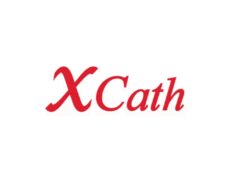 Operative microscopes have become fundamental to the success of modern neurosurgical and other surgical specialty procedures. They have become active platforms for the development of improved user-control interfaces and robotic systems. Latest developments provide significantly more functions than previous operative microscopes.
Operative microscopes have become fundamental to the success of modern neurosurgical and other surgical specialty procedures. They have become active platforms for the development of improved user-control interfaces and robotic systems. Latest developments provide significantly more functions than previous operative microscopes.
A one-year study was recently conducted by Evgenii G Belykh (St Joseph’s Hospital and Medical Center, Phoenix, USA) and colleagues in order to perform a comprehensive assessment of the new, cutting-edge ZEISS KINEVO 900, a first-ever Robotic Visualization System. The study compares its performance to the previous model of ZEISS surgical microscope. Carried out in a neurosurgery research laboratory, the assessment covered robotic, exoscopic, endoscopic and fluorescence functionalities.
The study found that the KINEVO 900 provides a number of improvements over the previous surgical microscope.
Robotic technology and benefits:
Several novel robotic functions integrated into the KINEVO 900 were found to provide improved ergonomics, with a potential to increase the viewing quality of neurosurgical procedures, including the illumination and visualisation. The “PositionMemory” and “PointLock” functions of the KINEVO 900 were found to be helpful in procedures requiring small bone windows. Additionally, there is no need to constantly adjust the parameters of the microscopic visualisation during surgery. Considering that up to 40% of total surgery duration is spent adjusting the microscope, this technology could serve to decrease operative time.
Integrated exoscopic visualisation and benefits:
The 3D 4K Digital Hybrid Visualization of ZEISS KINEVO 900 was found to be a significant improvement over prior technology. With the exoscopic visualisation mode and long working distance, the entire operative room team can appreciate the detailed structures in the depth of surgical corridor. Furthermore, the 3D widescreen exoscopic view increases educational value. The study found that it was feasible to perform microvascular suturing and other microsurgical manipulations when the KINEVO 900 was used as an exoscope with the 3D view.
Fluorescence visualisation and benefits:
Other notable improvements found with the KINEVO 900 over the previous ZEISS system include improved intraoperative fluorescence visualisation. The KINEVO 900 provides better discrimination between the fluorescent signal and the surrounding area by means of a significantly improved perception of brain and blood colours. Non-fluorescent tissues appeared much brighter and more natural in colour with the KINEVO 900 digital display and slightly brighter through oculars compared to the previous system.
The KINEVO 900 provided a novel augmented reality ICG overlay function, better image resolution, and improved post-processing workflow for quantification of the flow compared to the previous ZEISS systems. FLOW 800 was shown to be clinically beneficial to detect ischaemic brain regions, differentiation of the feeders and draining vessels in arteriovenous malformations and quantitative evaluation of microanastomosis patency. This study showed that ICG angiography was sensitive enough to assess blood flow even in small vessels less than 1mm diameter with similar quantitative results.
Fully integrated endoscopic Micro-Inspection Tool and benefits:
Endoscope assistance in microscope-operated intracranial surgeries offers an additional visualisation of the deep structures. However, endoscope assistance is limited by a decrease or at least significant impediments in manoeuvrability when compared with using the operative microscope. The KINEVO 900 is a robotic visualisation platform that solidifies integration of microscopic and exoscopic visualisation with a micro-inspection angled endoscope. This fully integrated Micro-Inspection Tool, QEVO, allowed inspection of areas around the resection cavity. The combination of two views in a picture-in-picture format enables a safer and efficient way to perform endoscope assisted procedures
QEVO also enabled identifying blind spots to resect hidden portions of the cavernous malformation. The post-operative imaging confirmed a gross total resection and the patient was observed returning back to full strength one month after the surgery.
In all, the improvements made in the KINEVO 900, along with the fully integrated endoscopic Micro-Inspection Tool, are significant. These improvements will influence ergonomics, precision, efficiency, viewing quality, and educational value of surgical procedures, providing that surgeons receive suitable training in its optimal use.













